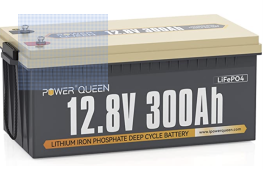How the rumor started
The memory affect was first discovered in batteries used on satellites.
This idea did not come out of nowhere. NiCad batteries were used in satellites during the 1960s where their lives would follow a very exact pattern – recharging for 12 hours via solar panels and then discharging for 12 hours. The discharge and recharge patterns would be virtually identical every day and they would repeat this thousands of times as they orbited the earth.
Pensabene and Gould, two scientists working at GE, studied these batteries after they had been in use and noticed the voltage drop when they were discharged below the point when recharging would have normally started. In 1976 they published a paper called “
Unwanted Memory Spooks Nickel Cadmium Cells” outlining their findings.
From there the myth took hold and almost any NiCad issue suddenly got blamed on memory effect.
Finding a real memory effect
Widely ignored is that Pensabene and Gould also attempted to repeat the memory effect in the laboratory by subjecting NiCad cells to over 5,000 cycles of identical charge and discharge cycles but failed to see the same result that they had observed in used satellite batteries. A similar attempt in 1996 by scientists Sato, Arakawa and Kobayakawa also could not produce cells that exhibited the memory effect.
Despite this, many people still pointed to the memory effect as a shortcoming of Nickel Cadmium. General Electric attempted to correct this in a technical notice where they pointed out that in order to even have a remote chance of the memory effect occurring, three steps were required:
- The battery must be discharged to exactly 25% (+/- 1%) of its capacity
- The battery must then be recharged to exactly 100% and then the recharging must be cut off.
- This pattern must be repeated hundreds of times.
It is clear that there are very few real world applications, perhaps none, where such a situation would occur. Users of battery powered devices never discharge to exactly 25% hundreds of times and it is also common place for batteries to be overcharged (left charging even after they have reached 100%). This latter practice is even thought to clear any memory effects anyway.
General Electric, who for all intensive purposes started the rumor, has also stated “the idea of a memory phenomenon in nickel-cadmium batteries has been widely misused and understood …[and]… has become a catch-all ‘buzzword’ that is used to describe a raft of application problems”.
The unshakable myth
Despite all that has been done to show the memory effect is not a real world issue, misinformation abounds. The Compact American Dictionary of Computer Words describes memory effect as “A property of NiCad Batteries in which the amount of charging they accept at one time fixes the maximum amount of charging they can accept in subsequent recharges”
Even
a 2013 research paper looking at the memory effect in Lithium-Ion batteries starts with “Memory effects are well known to users of nickel–cadmium and nickel–metal-hydride batteries.”
In short, memory effect in all likelihood does not exist and even if it did, it occurs under such specific circumstances that the chances of it happening in any particular application are almost zero, if not zero.
It’s also worth noting that stories of the memory effect are not limited to NiCad. In 2013 Petr Novak at the Paul Sherrer Institute, working alongside Toyota Research Laboratories,
claimed to have found a similar phenomenon in Lithium-Ion batteries. This has yet to be confirmed by other researchers.





